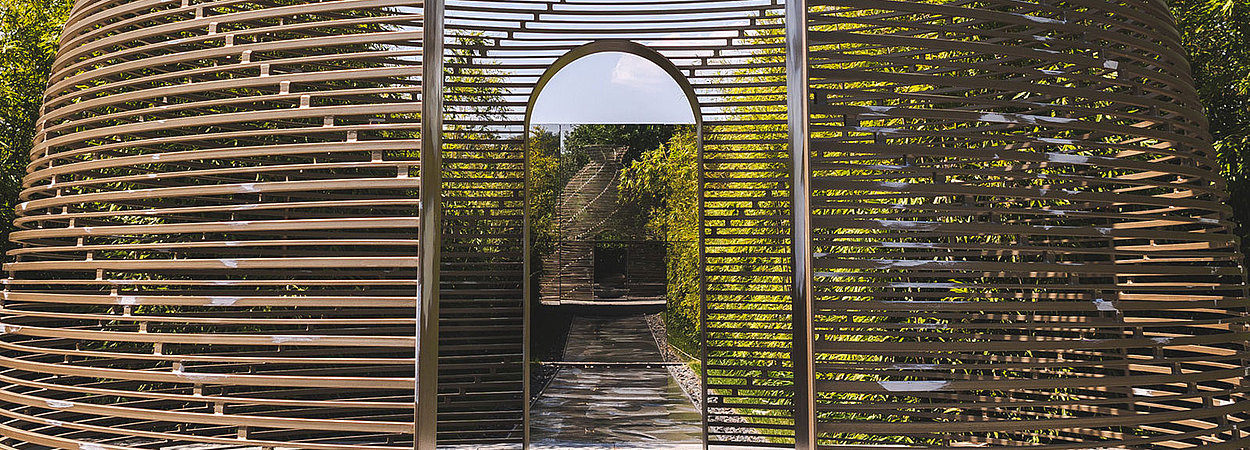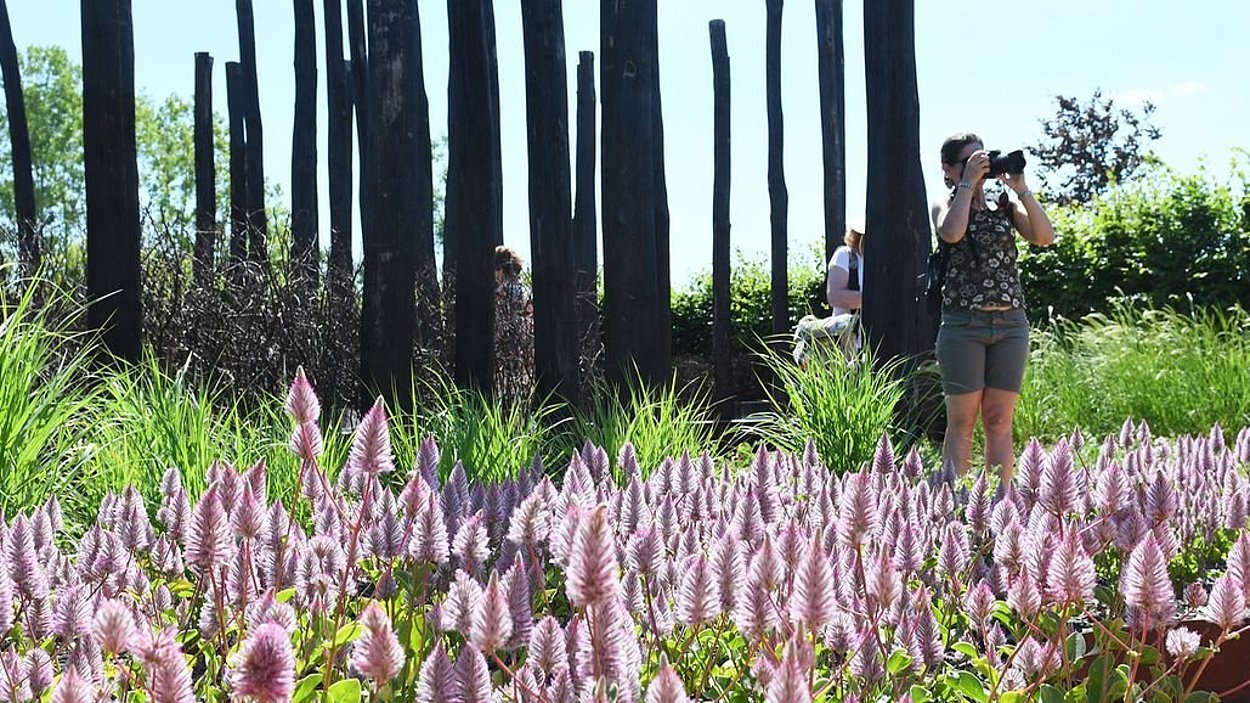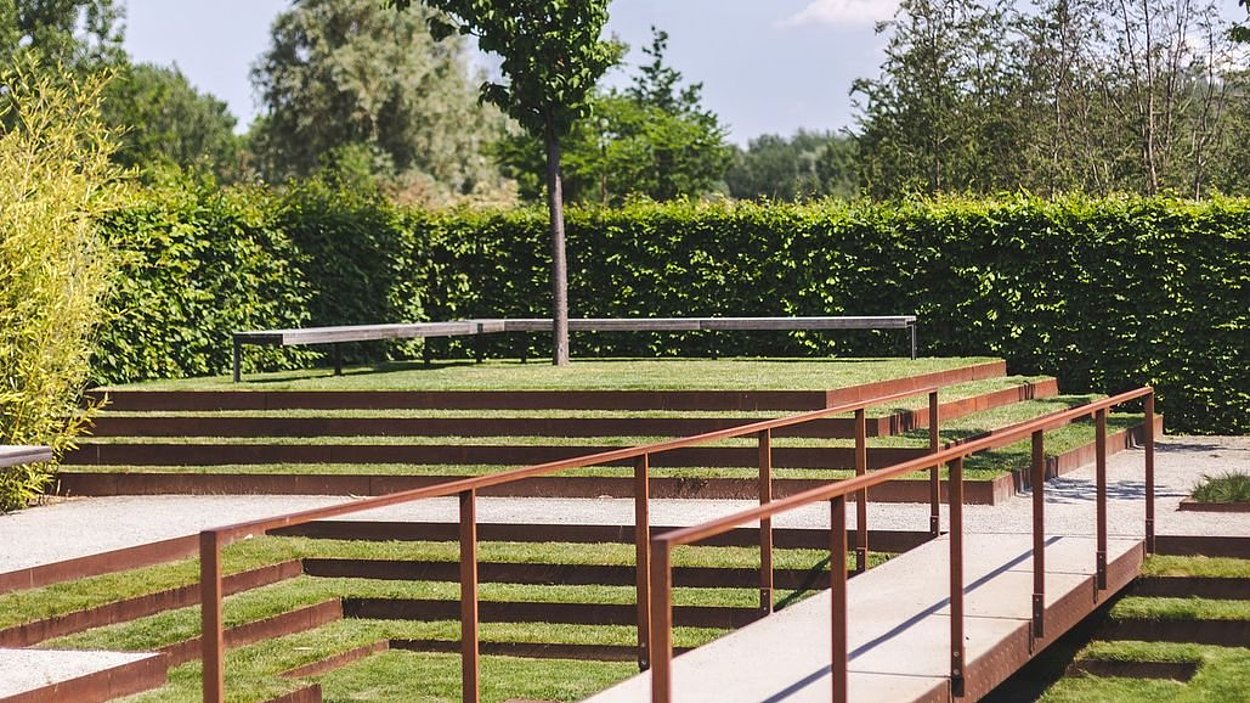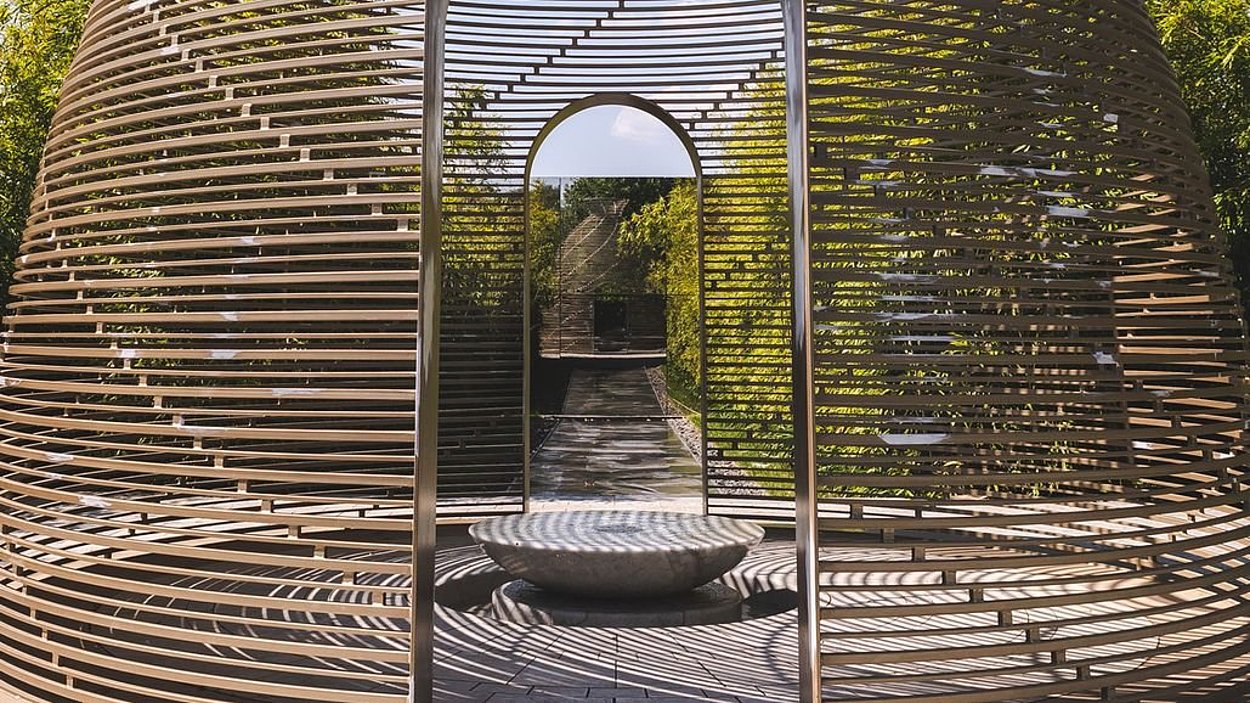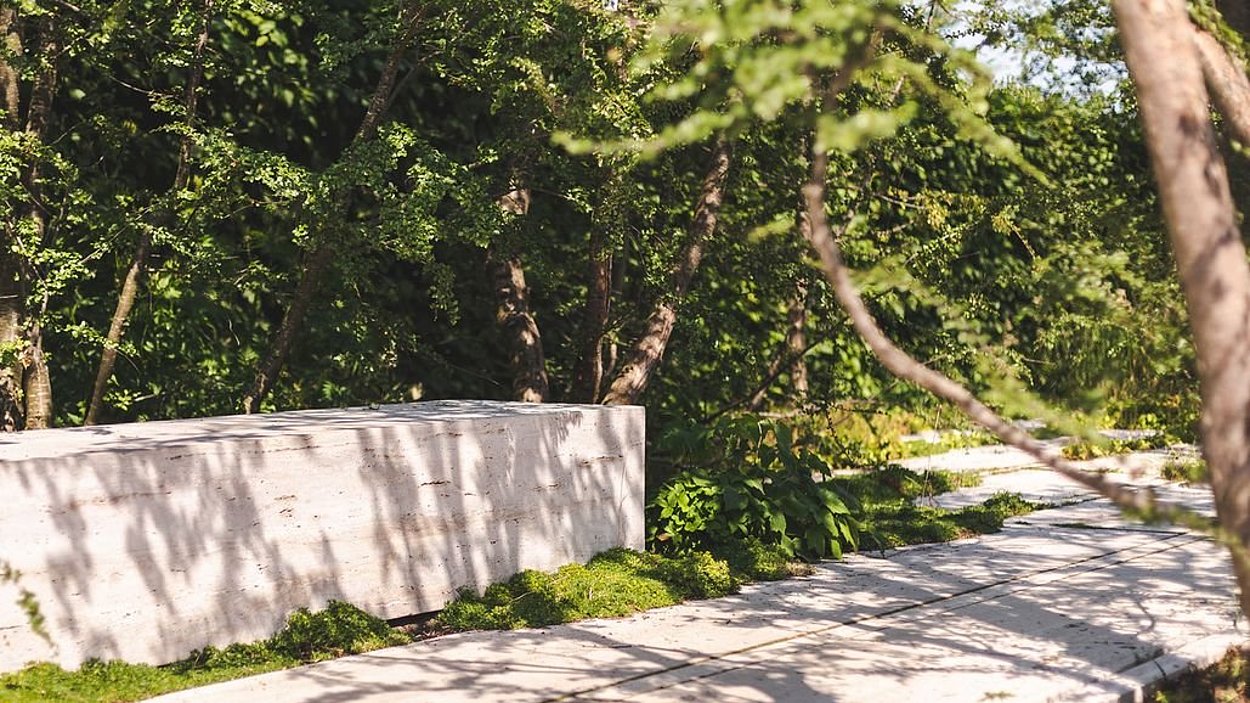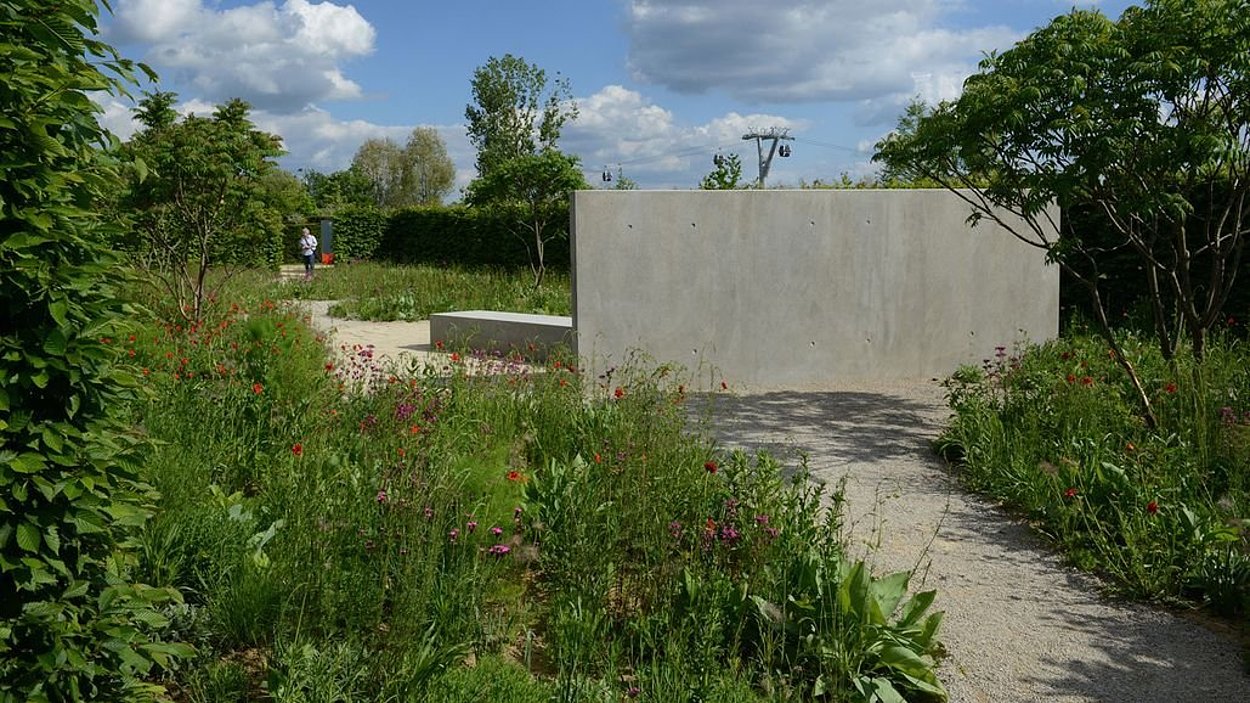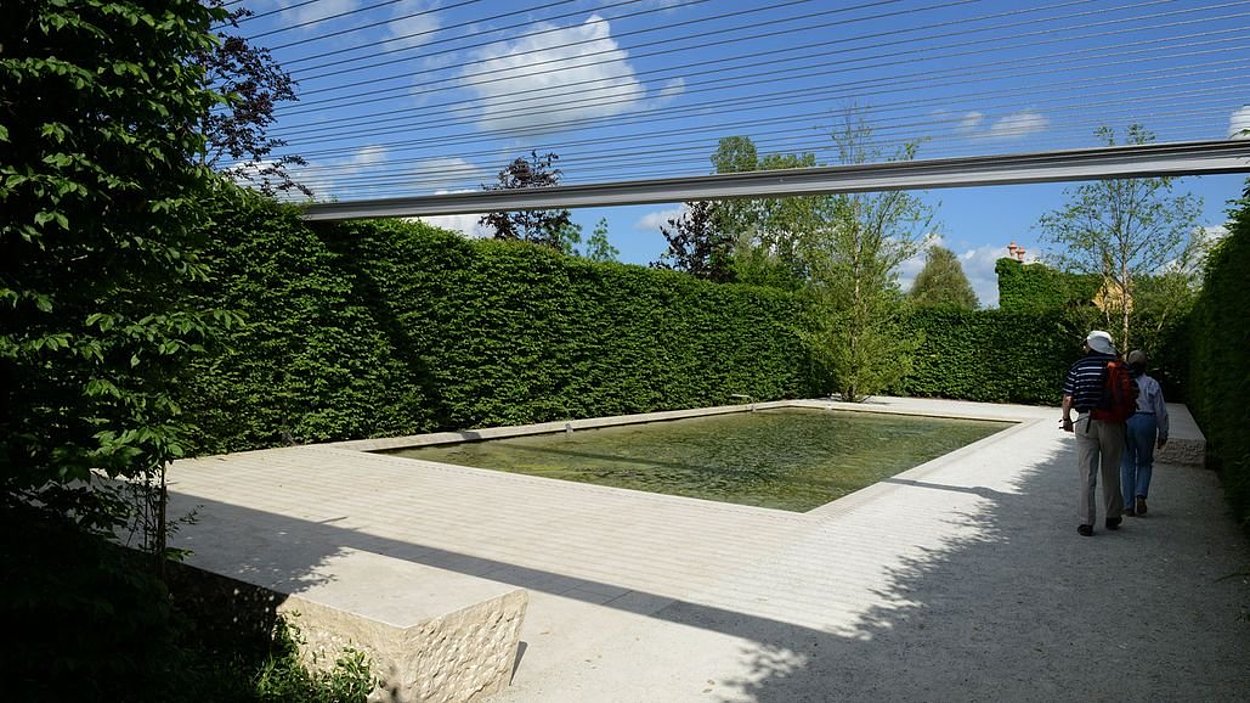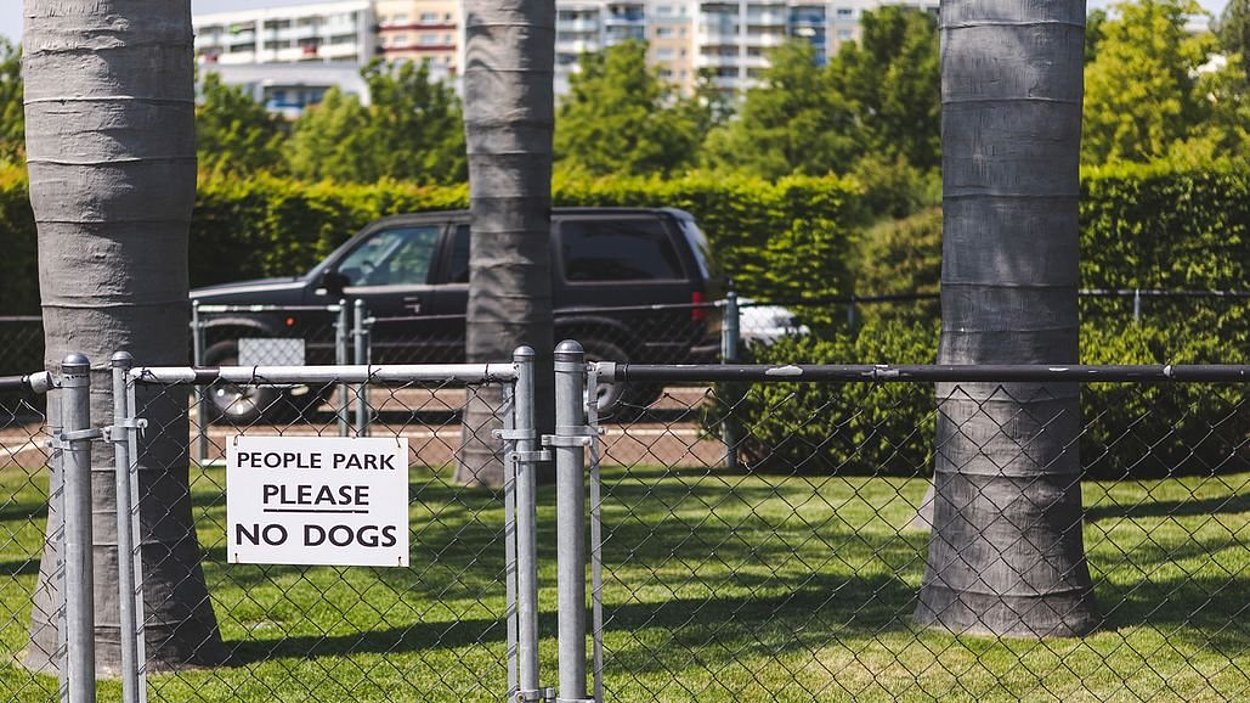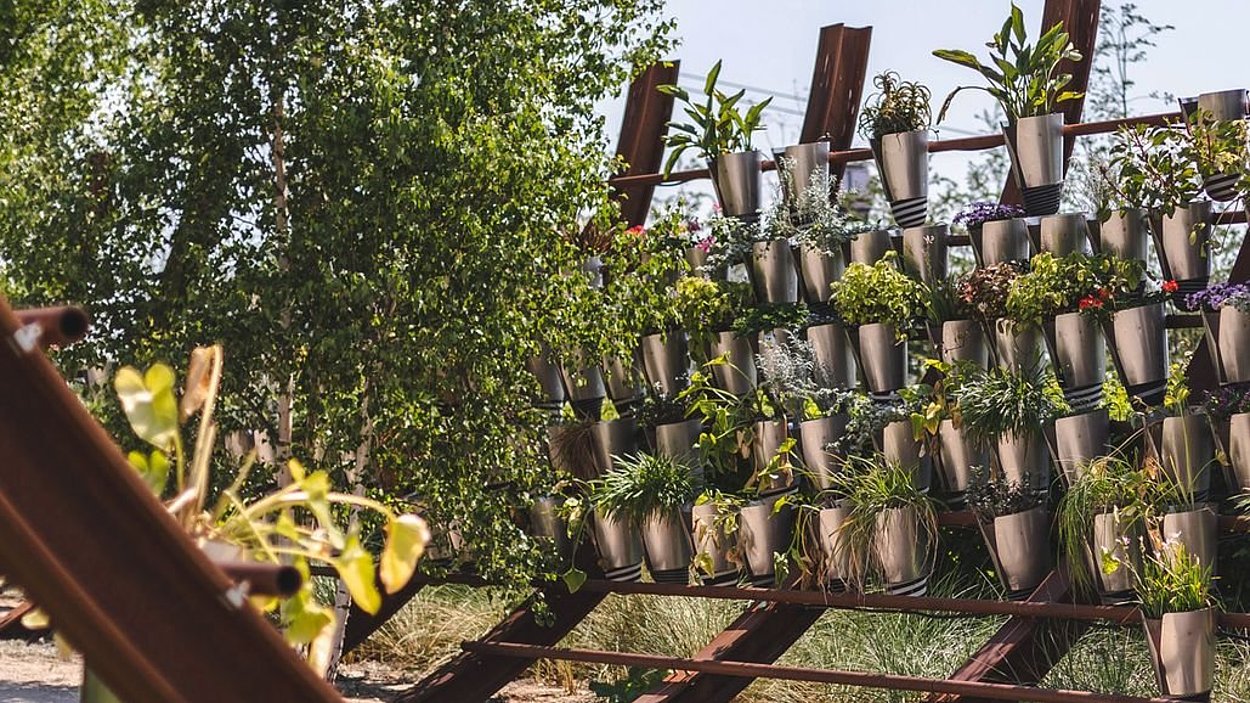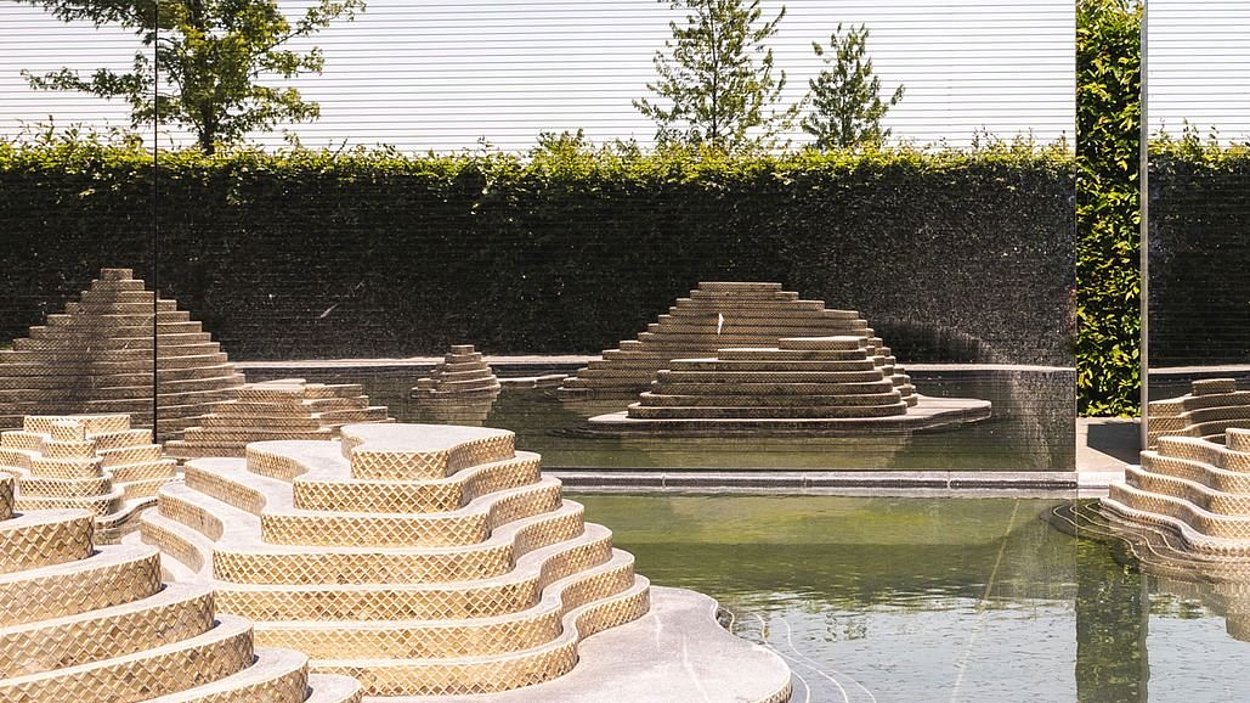China
Accepting Yourself
The preoccupation of humans with themselves hasn’t only been in fashion since the advent of yoga studios and meditation apps. Introspective and independent ways of thinking were, for example, already a central element of the way of life of Chinese scholars. Sima Guang, politician, historian and scholar of the Chinese Song dynasty, created a garden in the 11th century that was said to be particularly beneficial to this lifestyle: the Dule Yuan, translated as "Garden of Secluded Pleasure". In an essay he described the structure and landscape highlights of the garden. Since then, the Dule Yuan has maintained a pre-eminent position in Chinese horticultural history.
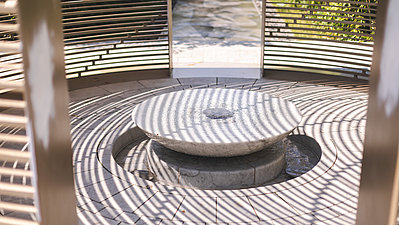
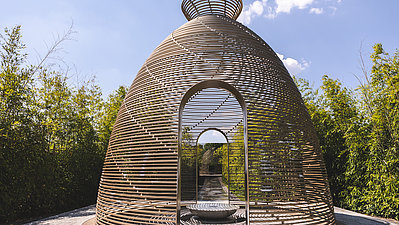
The „Dule Yuan“
The design of the garden is based on a painting by Dule Yuan from the 16th century. Its geometric axis structure is composed of a bamboo path, a rectangular plaza and a water channel. The garden's eye-catching and popular photo spot is the modern designed steel bamboo hut painted in gold, which blends in harmoniously with the gentle geometry of the surrounding garden landscape. The surrounding mirror surfaces create a vertical depth that blurs the boundary between man and nature. In the spirit of the Dule Yuan, the mirror surfaces are also intersections between reality and imagination, between seeing and being seen. This fluid awareness of space is what makes up the spiritual essence of Chinese gardens.
Zhu Yufan / Y³C
The Y³C studio by Zhu Yufan, a professor of landscape architecture in Beijing, sees itself as an interdisciplinary platform for landscape planning and design. Inspiration from design, theory and empirical research flow continuously into Y³C’s projects.
